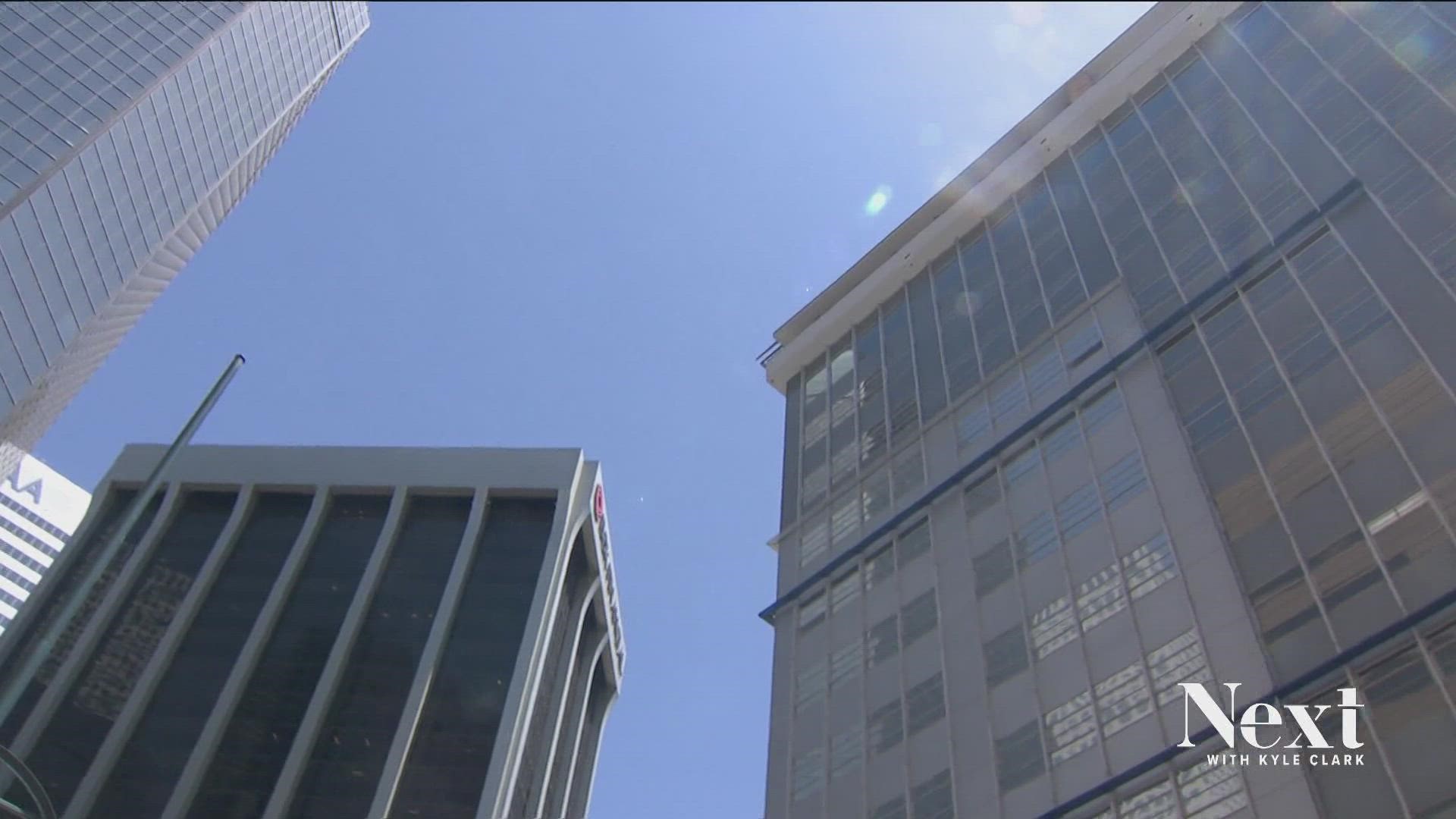DENVER — The Petroleum Building near Denver’s 16th Street Mall has come a long way in its 65-year history.
It very briefly held the distinction as the tallest building in the city when it was built in 1957, according to John Borst, part of the current ownership group. It housed the luxurious Petroleum Club a ballroom on the 13th floor. In the 80s when oil companies moved out, other businesses moved in to fill some of the vacant office space, he said.
In the months before the pandemic, Borst and his ownership group were preparing to sell the building.
“We were actually positioning this building for sale prior to COVID and we had a deal in place coming into COVID,” Borst said. “We had signed everything, we were ready to go and then COVID happened and that deal fell through.”
“It was already a little vacant and then when COVID hit tenants went out of business and our [occupancy] rate just plummeted,” he said.
Now Borst and the ownership group have submitted a proposal to the city of Denver to convert the office building into a full or partial apartment building with up to 150 units.
“Our building is actually really conducive to an apartment footprint,” he said.
The process of converting a building from one type of use to another is called adaptive reuse, a process that has been used by developers in downtown areas for years as part of revitalization efforts.
“We are seeing this,” said Kourtny Garrett, the president and CEO of the Downtown Denver Partnership, a non-profit organization that lobbies for businesses and residents in Denver’s Central Business District. “I think it’s going to become a regular phenomenon. And I think it’s really positive as we balance our reuses in the center city.”
Garrett, who is originally from Denver but spent the last few years working with a similar organization in Dallas, said she has seen successful efforts to revitalize historic buildings in other cities.
“This is definitely a trend,” she said. “You see it in Charlotte, you see it in Atlanta, you see it in Houston. You’ve seen it here in Denver. We should not forget -- where did LoDo start? With adaptive reuse of a lot of the old warehouse buildings.”
Converting office space to residential isn’t easy or cheap. Some studies show adaptive reuse can cost a developer more than tearing down a building and starting from scratch. But the environmental impact of building from scratch is much greater.
“Twenty-three percent of the carbon that’s admitted into the atmosphere comes from three components of new construction: steel, concrete and aluminum,” said John Gambrill, an architect with the firm Gensler, which has done some work with adaptive reuse in Denver. “As soon as you stop building new you’re going to save a lot of those components that are going to admit carbon into the atmosphere.”
Garrett said she has heard from commercial property owners considering adaptive reuse. The city of Denver has, too. Laura Aldrete, the executive director of Denver’s Community Planning and Development Department, said it helps work toward the city’s goal to reimagine downtown Denver. She said currently about 10% of the property downtown is residential. The city would like to see that number boosted to 30 to 40%. And Aldrete said the pandemic could help the city get there.
“If you look across the world you had a number of cities that are successful, that were successful through the pandemic because they had a mix of residential and office and healthy amenities and open space in their downtown, and I think this is an opportunity to work towards that goal,” Aldrete said.
“We think there’s a great opportunity in downtown to become another vibrant neighborhood of Denver that includes office.”
Garrett said adaptive reuse meets the demand her organization is seeing from people who want to be downtown. They want housing, entertainment and more lodging for visitors.
“I think COVID has opened an opportunity for us to take some of these structures that were struggling before and give them new life.”
SUGGESTED VIDEOS: Full Episodes of Next with Kyle Clark

